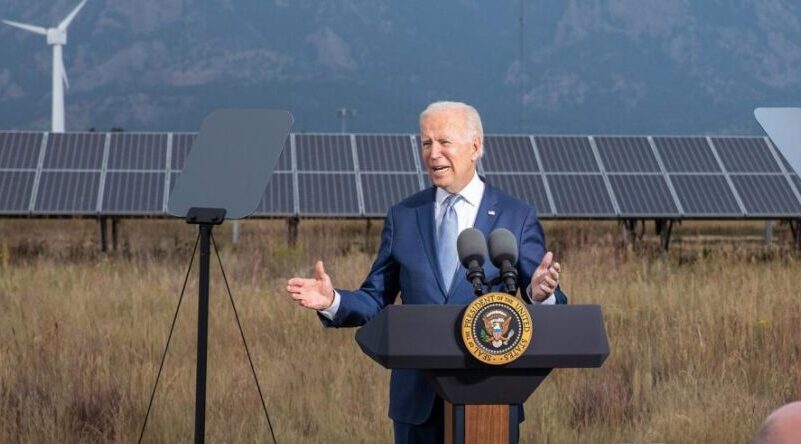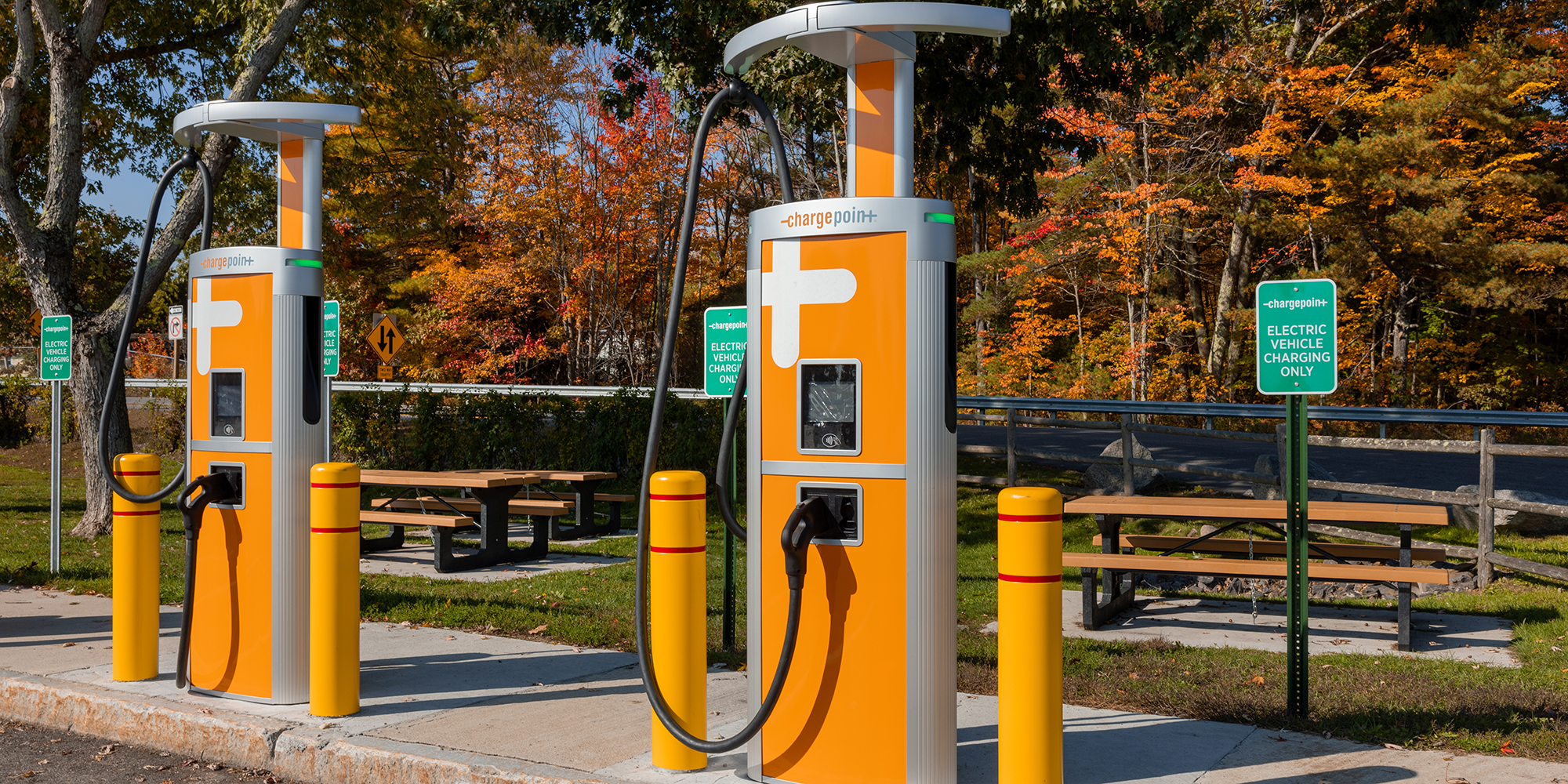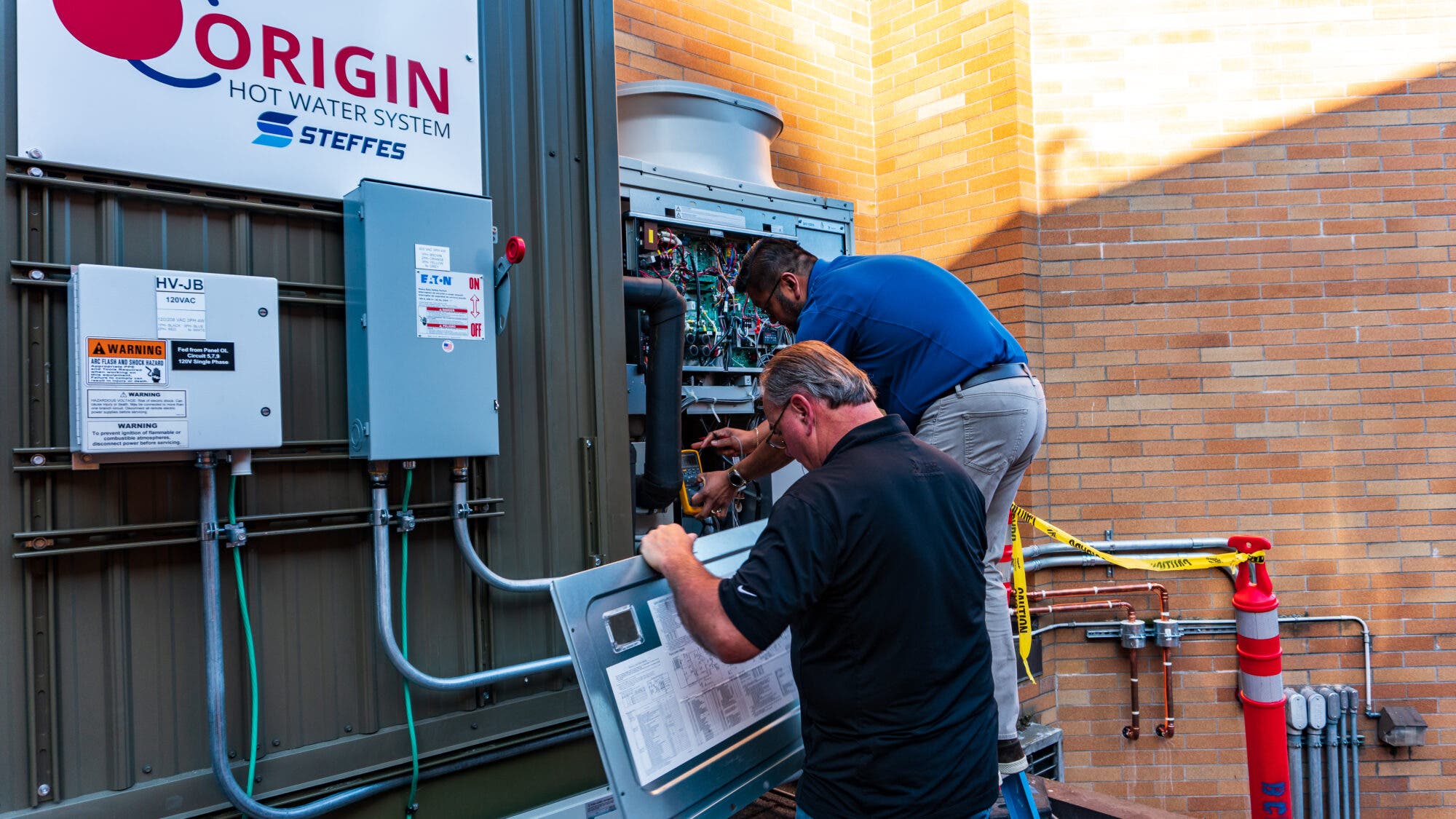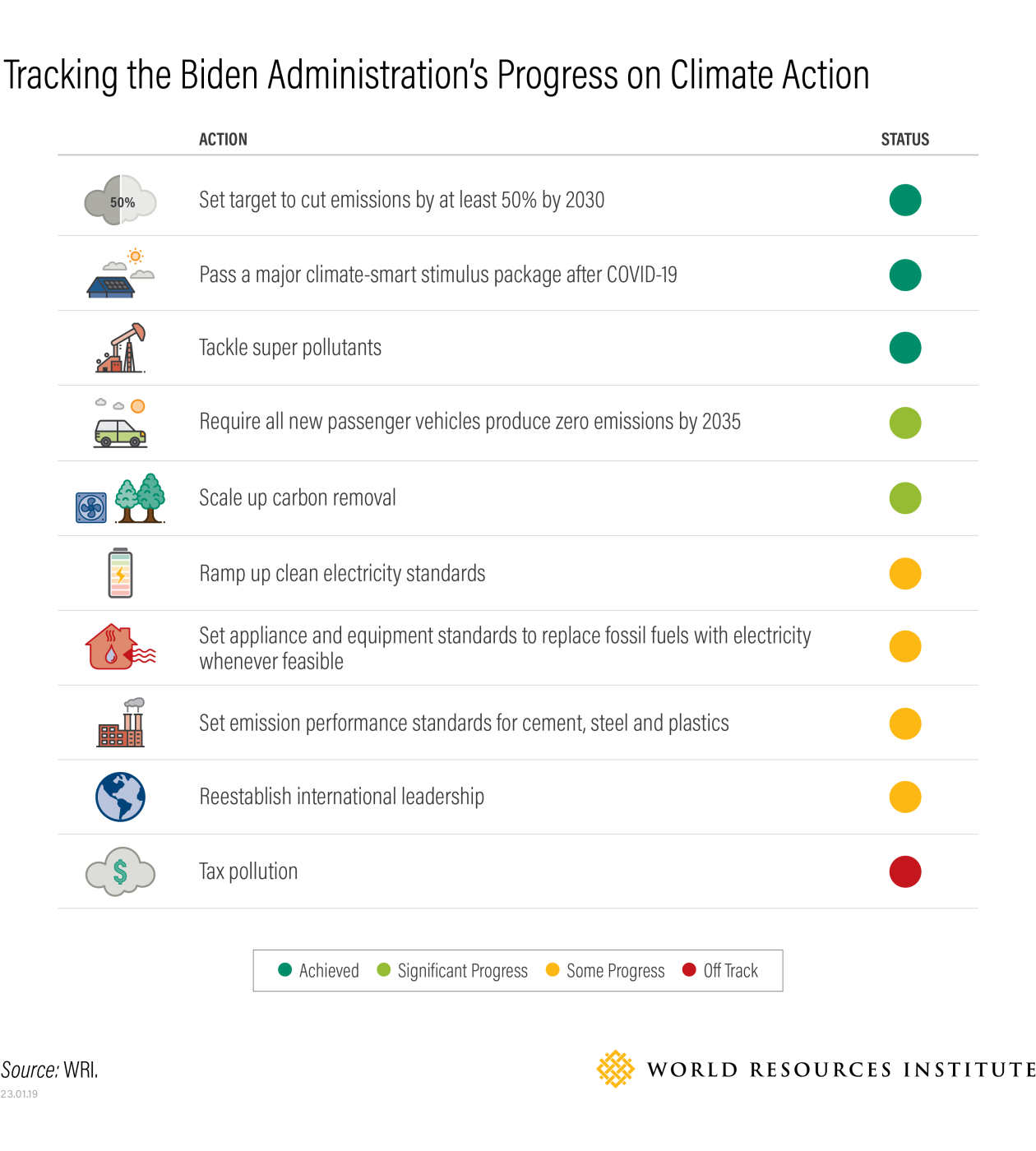Sign up for daily news updates from CleanTechnica on email. Or follow us on Google News!
In 2020, Joe Biden ran for president on the most ambitious climate action platform of any major presidential candidate in U.S. history. As President Biden finishes his term, it’s time to take stock of what his administration accomplished, what is still a work in progress, and what is off track.

U.S. Climate Action: What’s on Track, and What’s Not?
The Biden administration’s most important climate action to date was signing the Inflation Reduction Act into law in August 2022, the most comprehensive climate legislation the U.S. has even seen. The law invests hundreds of billions of dollars in clean energy, electric vehicles, environmental justice and more.
But passing the Inflation Reduction Act was just the first step. In the two years since its enactment, the administration has focused on developing tax credit guidance and launching programs to implement its many clean energy provisions. Earning top marks in climate action, however, will require continuing timely and equitable implementation of the legislation while taking additional action to fill policy gaps.
Here’s how the Biden administration has performed so far across 10 key climate priorities:
Achieved
1) Commit to cut total greenhouse gas emissions by at least 50% by 2030: Achieved.
In April 2021, Biden set a new national goal to reduce emissions by 50% to 52% from 2005 levels by 2030, formalizing it in an updated nationally determined contribution (NDC) under the Paris Agreement. Achieving this goal will be a challenge, but it remains within reach thanks to progress made in 2022 (see #2).
The administration must develop a 2035 emissions reduction target by next year, as required by the United Nations Framework Convention on Climate Change (UNFCCC), that builds upon the United States’ 2030 goal.
2) Pass a major climate-smart economic stimulus package after COVID-19: Achieved.
Congress enacted the Inflation Reduction Act in August 2022, the largest piece of climate legislation in U.S. history. Building on the Infrastructure Investment and Jobs Act (or Bipartisan Infrastructure Law) passed in 2021, the Inflation Reduction Act establishes a comprehensive set of clean energy incentives, mostly through decade-long tax credits for everything from electric vehicles to direct air capture and sequestration of carbon dioxide.
The benefits of both pieces of legislation are being realized across all 50 states. Since the Inflation Reduction Act was adopted, the U.S. has seen a massive surge in clean energy manufacturing projects resulting in billions of dollars of investment and the creation of hundreds of thousands of jobs.
Americans can now access consumer tax credits for electric vehicles, energy efficient appliances and clean energy technology. In late 2023, the administration announced draft tax credit guidance for clean hydrogen production to drive decarbonization and accelerate the transition to clean energy, one of the final major provisions of the law that had been awaiting policy action.
3) Tackle super pollutants: Achieved.
Super pollutants like hydrofluorocarbons (HFCs) and methane are emitted in smaller quantities than carbon dioxide, but pound for pound trap much more heat. Tackling super pollutants is a key component of any comprehensive climate strategy.
The Senate ratified the international Kigali Amendment on reducing HFCs in September 2022, and U.S. Environmental Protection Agency (EPA) has issued regulations to phase down HFCs, as directed by the American Innovation and Manufacturing Act enacted in 2020.
In November 2022, the Biden administration released an updated Methane Action Plan, which includes 50 specific measures backed by $20 billion in funding provided by the Bipartisan Infrastructure Law, the Inflation Reduction Act and annual appropriations. The Inflation Reduction Act includes a methane emissions fee for certain oil and gas facilities that will kick in this year and increase to $1,500 per metric ton of methane in 2026. At the UN climate summit (COP28) held at the end of 2023, the Biden administration announced strong standards to reduce methane emissions from the oil and gas industry and on January 12, the EPA proposed rules to implement the methane emissions fee.
Biden was among the leaders who launched the Global Methane Pledge at the 2021 UN climate summit (COP26). As of December 2023, 155 countries have signed onto the pledge and committed to cut their total methane emissions by at least 30% by 2030.
Significant Progress
4) Require all new passenger vehicles sold after 2035 to produce zero emissions: Significant Progress.
In 2021, Biden set a goal for 50% of new passenger vehicles sold to have zero emissions by 2030 and signed an executive order directing federal agencies to purchase 100% zero-emission light-duty vehicles by 2027. In 2021, the EPA issued a final rule to significantly reduce greenhouse gas emissions from passenger vehicles in model years 2023 through 2026. This year, the EPA finalized strong passenger vehicle standards for vehicle models beginning in 2027 that will cut climate pollution from new cars and light trucks in half by model year 2032, compared to vehicles sold in 2026. This is expected to result in more than half of new cars being battery powered or plug-in hybrids by 2030. The administration also finalized new pollution standards for heavy-duty vehicles, such as trucks and school buses, that will help avoid 1 billion tons of greenhouse gas emissions by 2055.
At the state level, California finalized rules to require zero emissions from all passenger vehicles sold in the state after 2035 and 12 additional states have opted into this rule so far. More states should opt into California’s zero-emission vehicle standards and the EPA should promptly issue a waiver of preemption for this rule under the Clean Air Act.

In September 2022, the Department of Transportation approved plans from all 50 states plus Washington, D.C., and Puerto Rico to build a national electric vehicle (EV) charging network, supported by $5 billion in funding from the Bipartisan Infrastructure Law. EV sales are also getting a major boost from the tax credits included in the Inflation Reduction Act, which provide up to $7,500 for qualifying EVs assembled in North America, eliminating the per-manufacturer cap that had made all EVs sold by GM and Tesla ineligible until January 1, 2023. More than 1.4 million EVs were sold in the U.S. in 2023 (including fully electric and plug-in hybrids), representing more than 9% of all vehicle sales for the year and more than a 50% increase over total EV sales in 2022.
5) Scale up carbon dioxide removal: Significant Progress.
In addition to reducing emissions as quickly as possible, to meet its climate targets the U.S. will need to scale up methods to remove and permanently sequester carbon dioxide that is already in the atmosphere, using both natural (e.g. trees) and technological (e.g. chemical scrubbers) means.
The Bipartisan Infrastructure Law includes significant investments in wildfire risk reduction and ecosystem restoration to protect and promote natural carbon removal. It also establishes four regional hubs for direct air capture in order to demonstrate this technology at commercial scale. The first two awards were announced in August 2023.
The Inflation Reduction Act builds on these programs by allocating $19 billion to support climate-smart agriculture, providing additional funding for wildfire risk reduction and investing almost $3 billion to support carbon sequestration in urban forests and national public lands. The legislation also significantly enhances the Section 45Q tax credits for sequestering carbon dioxide captured directly from air, increasing the value to as much as $180 per ton and making the credit easier to access. The Internal Revenue Service issued initial guidance on claiming this tax credit on July 24.
Similar incentives should also be provided for a broader set of carbon removal approaches, such as carbon dioxide mineralization and biochar production.
Some Progress
6) Ramp up clean electricity standards to 55% by 2025, 75% by 2030 and 100% by 2035: Some Progress.
Biden has reiterated his goal to reach 100% clean electricity by 2035 and signed an executive order requiring federal agencies to procure 100% carbon pollution-free electricity by 2030. The tax credits for clean electricity generation included in the Inflation Reduction Act will make substantial progress toward these goals but may not be sufficient to get to a 100% carbon-free electricity system without additional measures — particularly accelerating the construction of additional electricity transmission capacity.
The Federal Energy Regulatory Commission (FERC) has taken some steps to reduce the backlog of clean energy projects waiting to be connected to the grid, but FERC does not have as much authority to expedite interstate transmission projects as it does for fossil fuel pipelines, an anomaly Congress should fix. The EPA issued final power plant emissions standards in May for greenhouse gases and other pollutants from new and existing coal-fired power plants and new natural gas plants, which will encourage further deployment of renewable energy. (The Supreme Court ruling in West Virginia v. EPA, constrains, but does not eliminate, the agency’s ability to do so). EPA still needs to issue regulations for existing natural gas power plants.
7) Set appliance and equipment standards to replace fossil fuels with electricity whenever feasible: Some Progress.
The Inflation Reduction Act includes a $2,000 tax credit for new heat pumps, a 30% tax credit for residential solar systems and batteries, and $9 billion to support state energy efficiency and electrification rebates. The Biden administration continues to follow through on its proposal to use the Defense Production Act to increase the availability of heat pumps. In November 2023, DOE announced $169 million in funding from the Inflation Reduction Act for nine DOE projects focused on accelerating electric heat pump manufacturing at 15 sites nationwide. While some progress has been made in 2023 and 2024 setting stronger energy efficiency standards for residential refrigerators and freezers, gas furnaces, water heaters and clothes washers, the Biden administration must now catch up on missed deadlines to set the strongest possible efficiency standards for all appliances.
Although there are no immediate prospects for a federal ban on fossil fuel appliances, the tax credits from the Inflation Reduction Act could incentivize states and cities to enact policies that electrify new buildings. In 2019, Berkeley, Calif., became the first U.S. city to ban the use of natural gas in new buildings in order to fight climate change. Since then, dozens of urban centers have followed, including major cities such as San Jose and New York City (although Berkeley’s ordinance has been overturned in the courts).
At the state level, New York plans to ban fossil fuels in all new buildings no later than 2027. California’s most recent building code update requires new buildings to be wired for all-electric operation and Washington State requires new buildings to have heat pumps, although neither state bans new gas hookups.

8) Set emission performance standards for cement, steel and plastics: Some Progress.
The Bipartisan Infrastructure Law includes major investments in carbon capture and sequestration and clean hydrogen production and use. These investments could go a long way in demonstrating methods to decarbonize emissions-intensive industrial subsectors.
In addition, a 2021 executive order directs federal agencies to buy low-carbon building materials and achieve net-zero federal procurement by 2045. In 2022, the Biden administration announced a new initiative requiring major suppliers to the federal government to set science-based emission-reduction targets. Meanwhile, the international First Movers Coalition, launched in 2021 at COP26, enlists major companies in decarbonizing cement, steel and chemicals by committing to purchase low-carbon materials when they become available, even if they initially come at a price premium.
These are important efforts to begin cutting emissions from industry, but without additional action, industry is projected to become the largest source of U.S. greenhouse gas emissions as other sectors make progress. The administration should now take the next step by establishing mandatory low-carbon product standards that apply to everyone — not just federal procurement.
9) Reestablish international leadership: Some Progress.
Biden rejoined the international Paris Agreement on climate change on his first day in office and held the Leaders Summit on Climate in April 2021. U.S. engagement in international climate policy was also clearly evident at COP26 in 2021 and COP27 in 2022. In addition to helping ensure completion of the Paris Rulebook during COP26 and agreeing at COP27 to establish a fund to help vulnerable countries deal with losses and damages from the impacts of climate change, the U.S. also helped launch the Global Methane Pledge, the First Movers Coalition on sustainable supply chains and the Glasgow Leaders’ Declaration on Forests and Land Use. And importantly, despite a challenging geopolitical relationship, formal bilateral climate discussions between the U.S. and China were reestablished during COP27, which can help the world’s two largest greenhouse gas emitters find areas of common ground to confront the climate crisis.
COP28 in 2023 ended with an agreement to “transition away from fossil fuels in energy systems, in a just, orderly and equitable manner, accelerating action in this critical decade, so as to achieve net zero by 2050.” As the world’s largest oil and gas producer, transitioning away from fossil fuels will not be easy for the United States, but in January, the Biden administration took an important step toward limiting fossil fuel production and accelerating the transition to a clean energy economy by pausing approvals of new liquified natural gas (LNG) export facilities. Biden emphasized that “[t]his pause on new LNG approvals sees the climate crisis for what it is: the existential threat of our time.” When burned, LNG emits carbon dioxide into the atmosphere. Also, methane leaks from the LNG supply chain release pollution that is 80 times more potent at warming the atmosphere than carbon dioxide in its first 20 years. The suspension of LNG project approvals signals the administration is taking the COP28 agreement seriously.
The U.S. will also need to follow through on its pledge to significantly increase its international climate finance. Although Biden has committed to mobilize $11.4 billion in climate finance annually by 2024, the U.S. is not nearly on track to reach that goal. At COP28, the Biden administration pledged $3 billion to the Green Climate Fund but it is up to Congress to appropriate the funding. In the past two fiscal year budgets, Congress has appropriated only $1 billion annually for climate finance. While the U.S. Development Finance Corporation may be able to increase the level of funds mobilized, it will still not come close to the $11.4 billion mark. In addition, it’s not clear whether the U.S. can meet the $3 billion in funding for adaptation as part of a global pledge by developed countries to collectively double their adaptation finance by 2025.
Biden needs to prioritize securing increased Congressional appropriations for international climate finance, which is even more challenging given the current House of Representatives leadership and their efforts to cut, rather than increase climate spending.
Off Track
10) Tax pollution: Off Track.
The Inflation Reduction Act and Bipartisan Infrastructure Law represent the most significant climate policy advances in U.S. history and include important investments in climate-smart infrastructure and incentives to deploy climate solutions at scale. No climate policy is complete, however, without a mechanism to ensure that emissions-reduction targets are met through enforceable emissions caps and/or an emissions fee that ratchets up if other measures fall short. The U.S. is not yet on track to achieve needed emissions reductions and charging a fee on carbon emissions would be an effective way to help close the gap.
Despite the best efforts of Sen. Sheldon Whitehouse (D-R.I.) and others, majority support for carbon pricing in Congress remains elusive. This debate will continue, spurred on in part by the E.U.’s plan to impose border carbon tax adjustments on emissions-intensive imports that don’t face a carbon-price equivalent to that created by the E.U.’s emissions-trading system for domestically produced items.
In 2023, Sen. Chris Coons (D-Del.) and Sen. Kevin Cramer (R-N.D.) introduced the bipartisan Providing Reliable, Objective, Verifiable Emissions Intensity and Transparency (PROVE IT) Act. This bill would direct the Department of Energy to conduct a study comparing the emissions intensity of certain goods produced domestically to the emissions of those same goods produced abroad. The Senate bill was favorably reported from the Environment and Public Works committee in January by a 14 to 5 bipartisan vote and a companion bill was also introduced in the U.S. House by a bipartisan group of lawmakers in July.
Additionally, Sen. Bill Cassidy (R-La.) introduced the Foreign Pollution Fee Act of 2023. This bill would impose a fee on products that are imported to the U.S. that have a higher emissions intensity than domestic alternatives. These bipartisan efforts have advanced the conversation around carbon border tariffs and the potential climate-smart benefits they could yield.
What’s Next for Climate Action During the Rest of Biden’s Term?
After decades of effort ending in failure, near-misses or small wins, Congress finally delivered transformative legislation to tackle the climate crisis in 2022. This would not have happened without Biden’s leadership, as well as the efforts of Congressional champions and countless climate action advocates and analysts.
Of course, the hard work of deploying climate solutions at the necessary speed and scale has only just begun. This task is now more difficult due to the divided 118th Congress, but the landmark legislation enacted by the 117th is secure for at least the next year. There are opportunities for the 118th Congress to deliver incremental progress through bipartisan clean energy permitting reform and Farm Bill reauthorization.
During his remaining time in office, Biden must submit an ambitious 2035 emissions reduction target to the UNFCCC and maintain the environmental integrity of the hydrogen production tax credit proposal in the final rule.
The Biden administration has also prioritized environmental and climate justice for vulnerable, underserved and historically marginalized communities. While historic progress has been made to advance equity and deliver environmental justice, the administration must continue efforts to ensure federal actions are effectively addressing the unique burdens faced by these communities. One such effort is to ensure federal agencies adopt robust Environmental Justice Strategic Plans this year to ensure accountability and embed and operationalize environmental justice in relevant federal activities.
Biden and his administration must stay focused on achieving their climate goals and avoid being distracted by Congressional gamesmanship and frivolous investigations. To stay on track, Biden will need to use every tool at his disposal while enlisting the help of states, cities, enterprises and citizens to deliver on the promise of a healthier, more prosperous and secure future for all.
This article was originally published on Jan. 12, 2022. It was updated on July 30, 2024.
By Dan Lashof. Courtesy of WRI.
Have a tip for CleanTechnica? Want to advertise? Want to suggest a guest for our CleanTech Talk podcast? Contact us here.
Latest CleanTechnica.TV Videos
CleanTechnica uses affiliate links. See our policy here.
CleanTechnica’s Comment Policy






